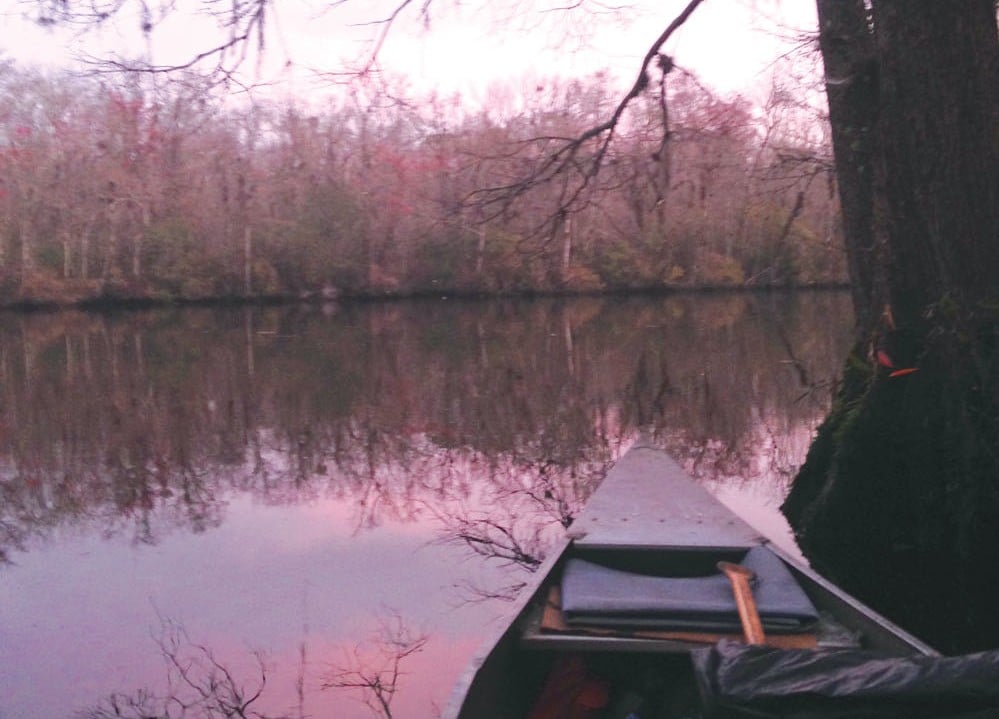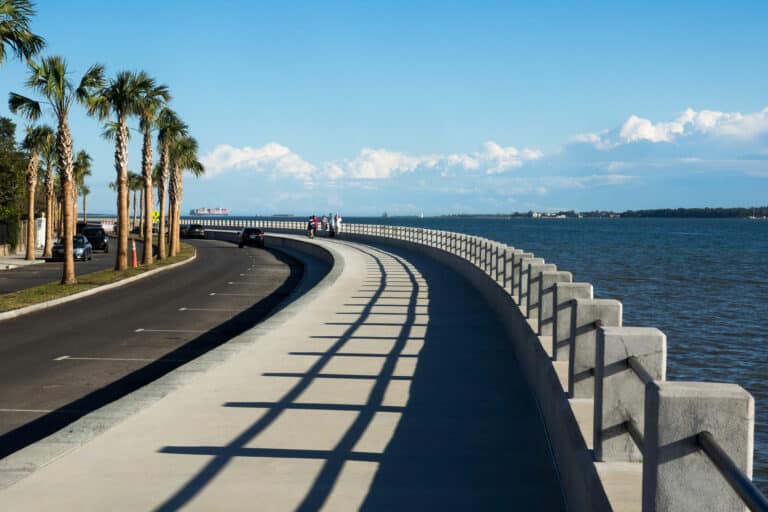A Journey on the St. Marys River
Emerging from Okefenokee Swamp, Georgia’s largest designated wilderness, and emptying into the Atlantic, the St. Marys River comprises the easternmost part of the Georgia-Florida border. With its twists and turns, we anticipated a 130-mile journey from the headwaters to the seaside town of St. Marys. While most of the crew would disembark here, one of us would continue across the intracoastal waterway to Cumberland Island, traversing a path between Georgia’s most prized wilderness areas, from swamp to shore.
I, along with five canoes and eight vagabond adventurers, rendezvoused at a drop-in point where the mucky trickle becomes a navigable passage. Pushing off from the dock, we found ourselves amid the plump-bottomed trunks of tupelo and cypress, their knees poking up from the swamp water like prehistoric, knobby fingers. Tangled along the shoreline were saw palmettos, loblolly pines, sparkleberries, and the occasional twisted-limbed live oak. Here and there, the steady view of browns and greens was interrupted by a maple covered in clusters of cherry-red, winged seeds or the white blossoms of a mayhaw. Thickets of willow growing in the middle of the stream gave the landscape an appearance less like a river than a flooded forest.
The current flowed quickly around frequent bends through an obstacle course of fallen trees to be sped over when below and limbo-ed under when above. Each canoe danced a combination step of forward paddles, J-strokes, and rudders, some boats slithering gracefully around each obstruction, others crashing through branchy snags, collecting piles of kindling.
The treeline reflected its mirror image upon the river, which is inky black, though not from sediment or pollution. Vegetation colors its waters, as tea leaves do when steeped in a kettle. Though dark, the water is translucent and icy cold.
Nonetheless, some of us swam—involuntarily. Schizandra went overboard while making an overenthusiastic grab at a passing fat pine log. Vanessa was displaced by a low-hanging tree branch, somersaulting backwards into the chilly water. Shocked, and weighed down by her drenched clothes, she clung to the stern while I guided our boat to shore. Once Vanessa had warmed up by a fire and changed into a dry camo jumpsuit, we took to the river once more, with newfound respect for her potential perils.
The most frightening was the thunderstorm. The moment we saw the first flash in the sky, we dashed towards the bank, crouching among the sawgrass in mud so soft and sticky it sucked at our boots like quicksand. Just when we thought we were in the clear and were boarding our boat once more, a deafening clap of lightning cracked just around the riverbend and we scrambled ashore.
There were other dangers. Twice, disgruntled river dwellers fired shots (once from an automatic weapon that continued to rat-tat-tat well into the night), forcing us to paddle frantically upstream. Though scared, we couldn’t help but respect these residents for protecting their home and ecosystem. Unless or until the St. Marys becomes a legally protected scenic river, these vigilant watchdogs are perhaps her best defense against intrusion.
Most days, though, were peaceful. Otters swam alongside our boats, long-necked herons displayed their impressive wingspans, hawks screeched, turtles sunbathed, fish jumped, and vultures swirled in a cyclone of black silhouettes.
Whether alertly avoiding the next fallen log, or leaning back and lazily drifting downstream, my brain tended to clear itself of trivial worries and focus on the present. With a meditative mindset and no need to look at a clock, we quickly forgot the hours and days and took to naming our campsites to keep track of the sequence of events. Camp Getaway. Camp Rope Swing. Machine Gun Ridge. Frog Squash Bend for the spotted, copper-eyed leopard frog, which would have been trampled underfoot had I not shrieked just in the nick of time. Camp Beaver Slam, for our mammalian friends who signaled their territory with chewed tree trunks and loud tail slaps.
A few days out from the coast, timing became unexpectedly vital. Our canoes, docked the night before alongside a mossy shore, were found the next morning high and dry, as the tide had pulled the river out from under them. We discovered that the current was quite literally reversing direction twice a day, slowing us down significantly. Based on our observations of the moon and the waterline, we set alarms for the wee hours, rising well before dawn to ride the tide towards the sea.
On the tenth and last day of our voyage, we greeted the sunrise on the water, then stopped for a midday nap on the last patch of low-lying terra firma. Using a fiddler crab for bait, Lily caught our first and only fish, a red drum, which we fried for lunch before entering the saltmarsh.
The river widened. A strong breeze, choppy waves, and the wake from passing motorboats rocked our canoes unsettlingly in the most dangerous stretch of river yet. Rounding the final bend, we were rewarded with a postcard-perfect view of the St. Marys marina. Gulls perched upon the masts of the many sailboats, basking in the golden light of a glorious sunset. As we triumphantly disembarked at the dock, a stranger gazed at the horizon and said, “Isn’t this just the perfect ending to a wonderful day?” I nodded, watching my friend Grayson paddle in the fading light towards Cumberland Island.
• Ellen Vessels








